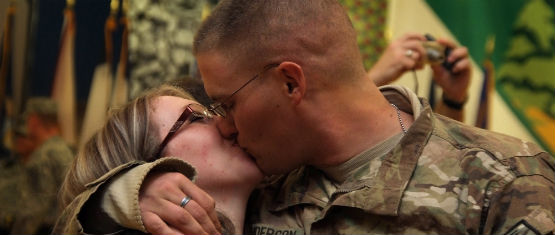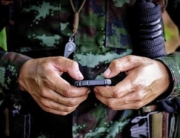by Claudia Bustamante
Even among a relatively healthy and young population, sexual functioning problems, including erectile dysfunction, are higher among military service members than civilians, according to a new University of Southern California study.
Thirty-three percent of male military service members aged 21 – 40 reported erectile dysfunction, a rate that is more than three times that of similarly aged civilians. Those with post-traumatic stress disorder (PTSD) were 30 times more likely to report erectile dysfunction and six times more likely to report such sexual functioning problems as low sex drive, arousal and ability to reach orgasm.
Published in the Journal of Sexual Medicine, the findings are based on a survey of 367 active duty male military service members conducted in the fall 2013 by the USC School of Social Work’s Center for Innovation and Research on Veterans & Military Families.
Principal investigator Sherrie Wilcox, along with colleagues Sarah Redmond and Anthony Hassan, also found a strong correlation with physical and mental health issues. Among the respondents, those suffering from mild depression and anxiety were almost 10 times more likely to experience erectile dysfunction; having experienced sexual trauma increased odds of erectile dysfunction by 13 and reporting even one traumatic life experience more than doubled odds of sexual functioning problems.
“We know that sexual functioning problems are associated with so many mental and physical health problems, but we were surprised to find such high rates in some instances. What we don’t know is which is causing which,” said Wilcox. “If they’re already having mental health problems, sexual functioning problems could be complicating things even more. All these factors are impacting each other.”
The preliminary estimates also show that the high rate of sexual functioning problems among young service members is negatively affecting their quality of life and happiness.
The center’s study was funded by a $650,000 gift from the Iraq Afghanistan Deployment Impact Fund via the California Community Foundation. This article is the first publication based on the study, which will also produce a training toolkit for military and community-based behavioral health providers that will include video vignettes, resources and a conference slated for early 2015.
“More than just research, we wanted to raise awareness about this enduring challenge that is highly stigmatized in the civilian world and even more so among military populations,” said Hassan, director of the center. “We want to make sure this research has impact on how we train clinicians and treat service members dealing with this particular post-combat challenge.”
Much of the research on the invisible wounds of combat has been largely focused on PTSD, traumatic brain injuries, depression and anxiety. Very little has specifically targeted sexual functioning issues among service members and the physical and psychological factors that may impact it.
The highly sensitive nature of the topic may also play a role.
The study’s rates for erectile dysfunction were higher than those reported by the Department of Veterans Affairs, less than 5 percent for those 40 and younger. Wilcox said a reason for the discrepancy could be that the VA only counts those who are specifically seen for erectile dysfunction issues, whereas the USC study asked broadly about sexual functioning and service members did not need to have sought treatment to be counted.
In fact, the study also found that only 12 percent of those who reported erectile and other sexual dysfunction issues, actually received treatment. Many cited a fear of the side effects of medication, concerns of what others would think, and that the treatments might not even work.
Like other health concerns, untreated sexual functioning issues can lead to an exacerbation of symptoms and poor quality of life.
Related
CIR Research Project — Sexual Functioning as a Result of Military Service








